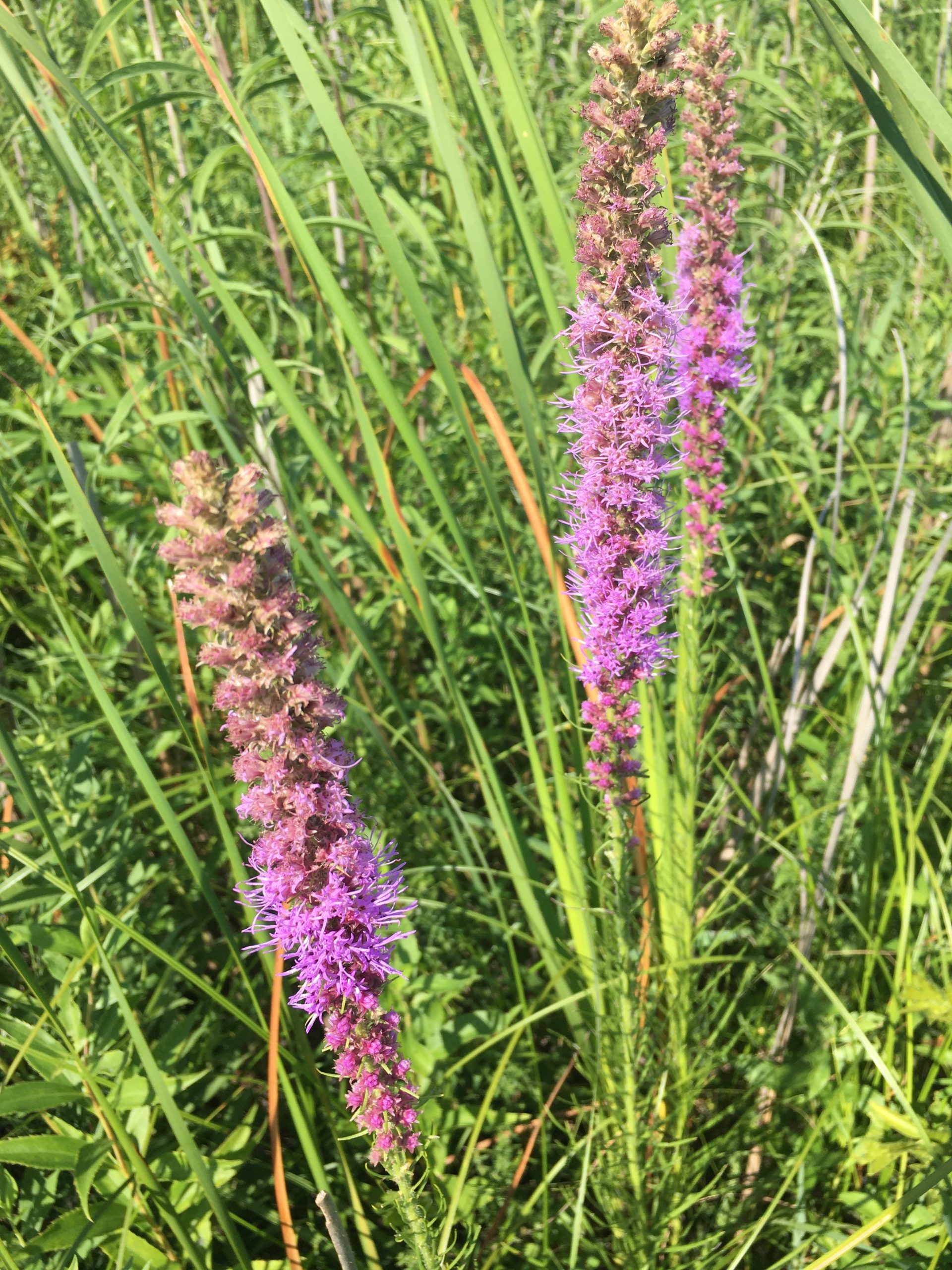Liatris pycnostachya
$5.49 – $9.89
Description
Key Information:
Soil: Hydric (Wet) – Mesic (Medium)
Sun: Full Sun – Part Sun
Height: 2-4 feet
Bloom Color: Pink-Purple
Bloom Season: July – August
More Details:
Suggested Uses: Prairie Blazing Star does well on moist-to-mesic soils and is a nice plant to use in the rain gardens and shoreline restorations! They are often found near wetlands. A great option for heavy clay soils. They make an excellent fresh or dried cut flower. Flowers hold onto their color when dried. They are attractive to birds bees and butterflies. Great pollinator plant! Deer resistant.
Native Range: Native to the Midwest and parts of the South, particularly areas adjacent to the Mississippi River. Native to Minnesota!
Pollinators: Bees, butterflies, moths and hummingbirds. The seeds are food for birds. They are an important nectar source for adult monarch butterflies and the federally endangered Rusty Patched Bumble Bee (Bombus affinis).
Flowers: The flower heads are about 1/2″ wide. They grow in a very dense spike on the end of a stiff stem and are reminiscent of a toothbrush, the way they are so tightly packed in the cluster.
Leaves: The linear leaves range in size from 4″-12″ near the bottom to less than 1″ at the top. Both the leaves and stems have short stiff hairs.
Interesting Facts:
Medicinal Uses: The corms have been used to treat snakebites, sore throat, and kidney ailments.
Name: The scientific name “pycnostachya” means crowded.
Other Names: Cattail Gayfeather
More information: USDA plant profile
Additional information
| Weight | 2 lbs |
|---|---|
| Size | 6-pack, 3.5" pots, 5.75" pots, Seed Packets (at least 25 seeds) |
| Color | |
| Characteristics | Full Sun, Partial Sun, Mesic Soil, Wet Soil, Summer Blooming, Fall Blooming, Tall Height |
| Uses | Deer Resistant, Attract Bees, Attract Birds, Attract Butterflies, Clay Soil, Shoreline, Cut Flowers |
 Wheelbarrow
Wheelbarrow




